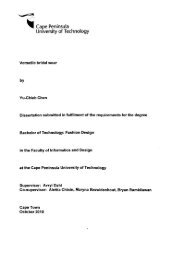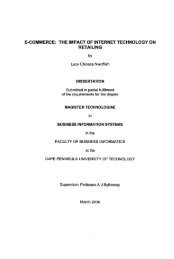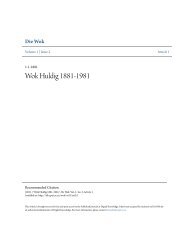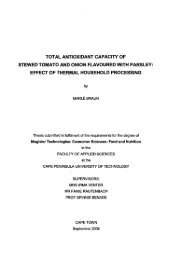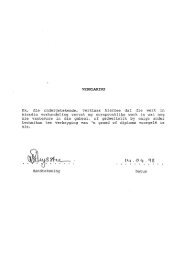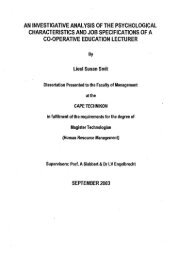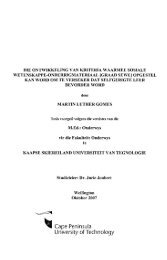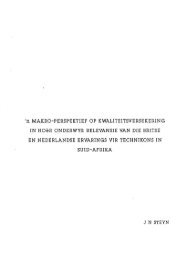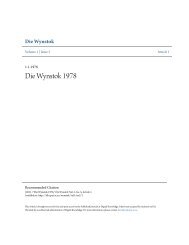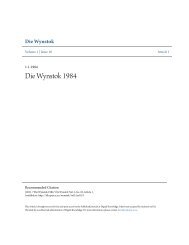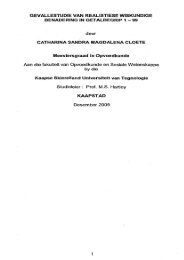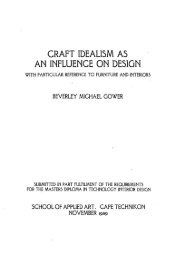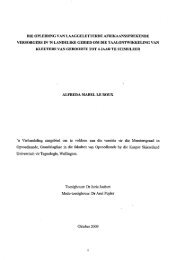the effect of the particle size distribution on non-newtonian turbulent ...
the effect of the particle size distribution on non-newtonian turbulent ...
the effect of the particle size distribution on non-newtonian turbulent ...
Create successful ePaper yourself
Turn your PDF publications into a flip-book with our unique Google optimized e-Paper software.
Chapter 2 Literature Review Page 2.38<br />
(2.77)<br />
Tests c<strong>on</strong>ducted by Slatter (1994) c<strong>on</strong>firmed <str<strong>on</strong>g>the</str<strong>on</strong>g> model to be more accurate than <str<strong>on</strong>g>the</str<strong>on</strong>g> Torrance<br />
(1963) model and Wils<strong>on</strong> & Thomas (1985, 1987) model against which experimental data<br />
was compared. This model was also supported by <str<strong>on</strong>g>the</str<strong>on</strong>g> experimental data <str<strong>on</strong>g>of</str<strong>on</strong>g>Park et al (1989)<br />
and Xu et al (1993).<br />
2.11.6 Maude & Whitmore Correlati<strong>on</strong><br />
Maude & Whitmore (1956, 1958) are two <str<strong>on</strong>g>of</str<strong>on</strong>g> <str<strong>on</strong>g>the</str<strong>on</strong>g> few researchers, if not <str<strong>on</strong>g>the</str<strong>on</strong>g> <strong>on</strong>ly two before<br />
Slatter (1994), to take any account <str<strong>on</strong>g>of</str<strong>on</strong>g> <str<strong>on</strong>g>the</str<strong>on</strong>g> <str<strong>on</strong>g>effect</str<strong>on</strong>g> <str<strong>on</strong>g>particle</str<strong>on</strong>g>s play in <strong>turbulent</strong> flow.<br />
Tests ·were c<strong>on</strong>ducted in thin vertical 2,2mm, 3,5mm and 5mm diameter tubes using emery<br />
slurries at six different c<strong>on</strong>centrati<strong>on</strong>s. The <str<strong>on</strong>g>particle</str<strong>on</strong>g> <str<strong>on</strong>g>size</str<strong>on</strong>g> <str<strong>on</strong>g>distributi<strong>on</strong></str<strong>on</strong>g> <str<strong>on</strong>g>of</str<strong>on</strong>g> <str<strong>on</strong>g>the</str<strong>on</strong>g> emery slurries<br />
fell within <str<strong>on</strong>g>the</str<strong>on</strong>g> range 20 to 40JLm. Data was presented in <str<strong>on</strong>g>the</str<strong>on</strong>g> form <str<strong>on</strong>g>of</str<strong>on</strong>g>curves <str<strong>on</strong>g>of</str<strong>on</strong>g> fricti<strong>on</strong> factors<br />
against Reynolds numbers.<br />
The main observati<strong>on</strong> <str<strong>on</strong>g>of</str<strong>on</strong>g> Maude & Whitmore (1958) was that <str<strong>on</strong>g>the</str<strong>on</strong>g> <strong>turbulent</strong> fricti<strong>on</strong> factor<br />
(based <strong>on</strong> <str<strong>on</strong>g>the</str<strong>on</strong>g> wall viscosity) was initially higher than <str<strong>on</strong>g>the</str<strong>on</strong>g> Newt<strong>on</strong>ian fricti<strong>on</strong> factor but fell<br />
below at increased Reynolds numbers. This observati<strong>on</strong> is c<strong>on</strong>tradictory to <str<strong>on</strong>g>the</str<strong>on</strong>g> more widely<br />
publicised finding that <str<strong>on</strong>g>the</str<strong>on</strong>g> n<strong>on</strong>-Newt<strong>on</strong>ian fricti<strong>on</strong> factor is always less than <str<strong>on</strong>g>the</str<strong>on</strong>g> Newt<strong>on</strong>ian<br />
fricti<strong>on</strong> factor (eg Wils<strong>on</strong>, 1986).<br />
The phenomena encountered by Maude & Whitmore (1958) were explained in <str<strong>on</strong>g>the</str<strong>on</strong>g> following<br />
<str<strong>on</strong>g>the</str<strong>on</strong>g>oretical terms. The mixing length, as developed by Prandtl, is defined as <str<strong>on</strong>g>the</str<strong>on</strong>g> mean<br />
distance which fluid elements move at right angles to <str<strong>on</strong>g>the</str<strong>on</strong>g> directi<strong>on</strong> <str<strong>on</strong>g>of</str<strong>on</strong>g> flow before <str<strong>on</strong>g>the</str<strong>on</strong>g>y<br />
acquire <str<strong>on</strong>g>the</str<strong>on</strong>g> velocity <str<strong>on</strong>g>of</str<strong>on</strong>g> <str<strong>on</strong>g>the</str<strong>on</strong>g> layer <str<strong>on</strong>g>the</str<strong>on</strong>g>y have entered. Hence, <str<strong>on</strong>g>the</str<strong>on</strong>g> fluid element would pursue<br />
an oscillating passage down <str<strong>on</strong>g>the</str<strong>on</strong>g> tube. However, inertial forces would prevent any high<br />
denSity <str<strong>on</strong>g>particle</str<strong>on</strong>g>s from following exactly <str<strong>on</strong>g>the</str<strong>on</strong>g> velocity changes <str<strong>on</strong>g>of</str<strong>on</strong>g> <str<strong>on</strong>g>the</str<strong>on</strong>g> fluid. The <str<strong>on</strong>g>particle</str<strong>on</strong>g>s<br />
Would instead oscillate with a smaller amplitude and <str<strong>on</strong>g>the</str<strong>on</strong>g> mean mixing length <str<strong>on</strong>g>of</str<strong>on</strong>g> <str<strong>on</strong>g>the</str<strong>on</strong>g><br />
suspensi<strong>on</strong> would decrease with an increase in solids c<strong>on</strong>centrati<strong>on</strong> as compared to that <str<strong>on</strong>g>of</str<strong>on</strong>g><br />
<str<strong>on</strong>g>the</str<strong>on</strong>g> raw fluid. They postulated that <str<strong>on</strong>g>the</str<strong>on</strong>g> <str<strong>on</strong>g>effect</str<strong>on</strong>g>ive mixing length is reduced by a <str<strong>on</strong>g>the</str<strong>on</strong>g>oretical



